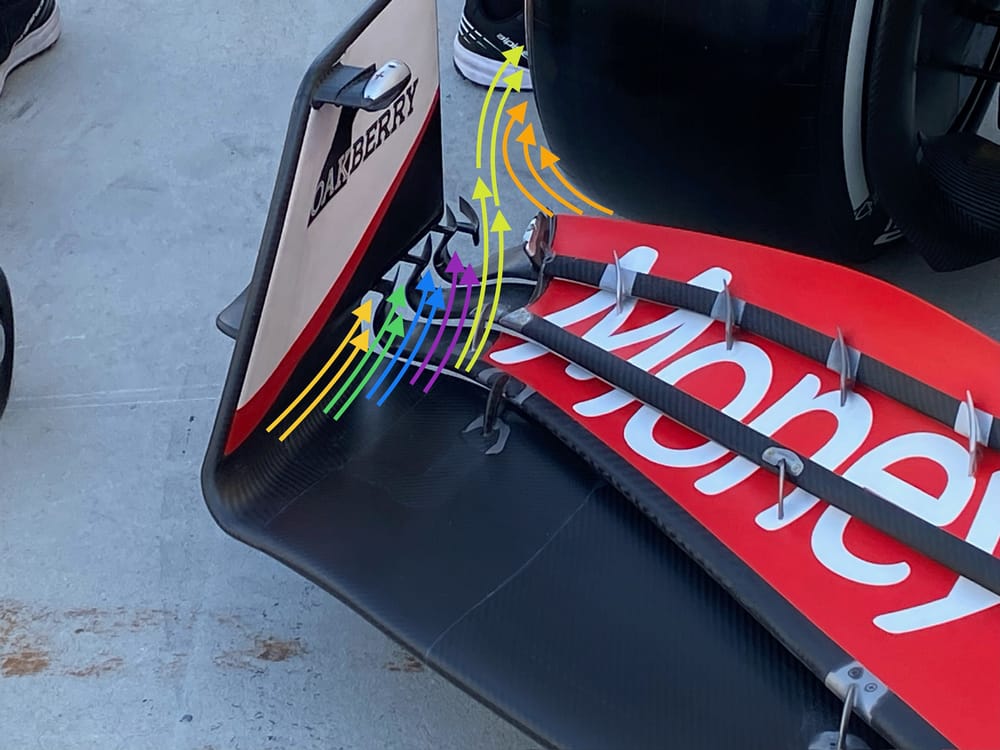Up Next

We’ve just had a wander down the Bahrain pitlane and I’ve seen my first 2024 Formula 1 car up close, the Haas VF-24.
As always, no matter which team it is – even one tipped to be at the back – these cars look impressive. Although I’ve been around F1 for more years than I care to remember, they still make an impact as real beasts.
It’s the chance to take a look at some of the details of a car that previously we only saw renders and carefully chosen team-supplied shakedown pictures of - so let’s take a quick look at some of the details.
Front wing
The front wing is, as I always say, the component that sets up the airflow structure for the rest of the car. There are a few critical areas that can make or break that flow structure as much as the front wing.
Firstly there’s the detail of how much airflow goes under the nose. This flow needs to stay tight to the undersurface of the nose. The better the flow, the more aggressive that surface can be and the better the flow will be to the leading edge of the underfloor.
I am a fan of a slot gap (green highlight below) through that middle section, rather than having the nose connect directly to the mainplane. Based on what we’ve seen so far, it’s about a 50/50 split between teams in terms of favouring this concept. It’s not just about changing that individual part because the rest of the car will need to be developed around that increased and altered airflow.

Also the nose has a reasonable blend radius at the front section allowing the airflow to spill off that area (yellow arrows above) along the sides of the nose.
My main concern is how aggressive the inboard section of the front wing is (magenta oval). Haas seems to be using this increased airflow through that slot gap and around the side of the nose to generate front downforce.
If this area is too aggressive, it can easily lose you more rear downforce than it gains you front downforce. This means the balance might be better but the overall downforce is reduced.
Front wing endplates
One part of the regulations where most teams have pushed into the grey areas is the intersection between the ends of the front wing elements and the vertical endplate.
This regulation detail was intended to simply allow the two to be joined together. But teams have used that to generate outwash, which was something that overall this set of aerodynamic regulations was designed to eliminate.
This is achieved by creating some delicately angled slot gaps to the intersection between the wing elements and the endplates, and by having the minimum connection acceptable.

You can see the detail in the above image with these yellow, green, blue and magenta arrows. Haas, like most others, is trying to generate that outwash and connect it up to the outward front tyre squirt. This outward airflow (orange arrows) is displaced around the corner of the tyre as it rotates onto the track surface.
Successfully connect up the outwash and the tyre squirt and you increase the airflow (light green arrows) in that area. This means less tyre squirt goes inboard.
Reducing this minimises the front tyre wake. If left unaddressed, this would generate turbulence to the undercut section of the sidepod and leading edge of the underfloor.




